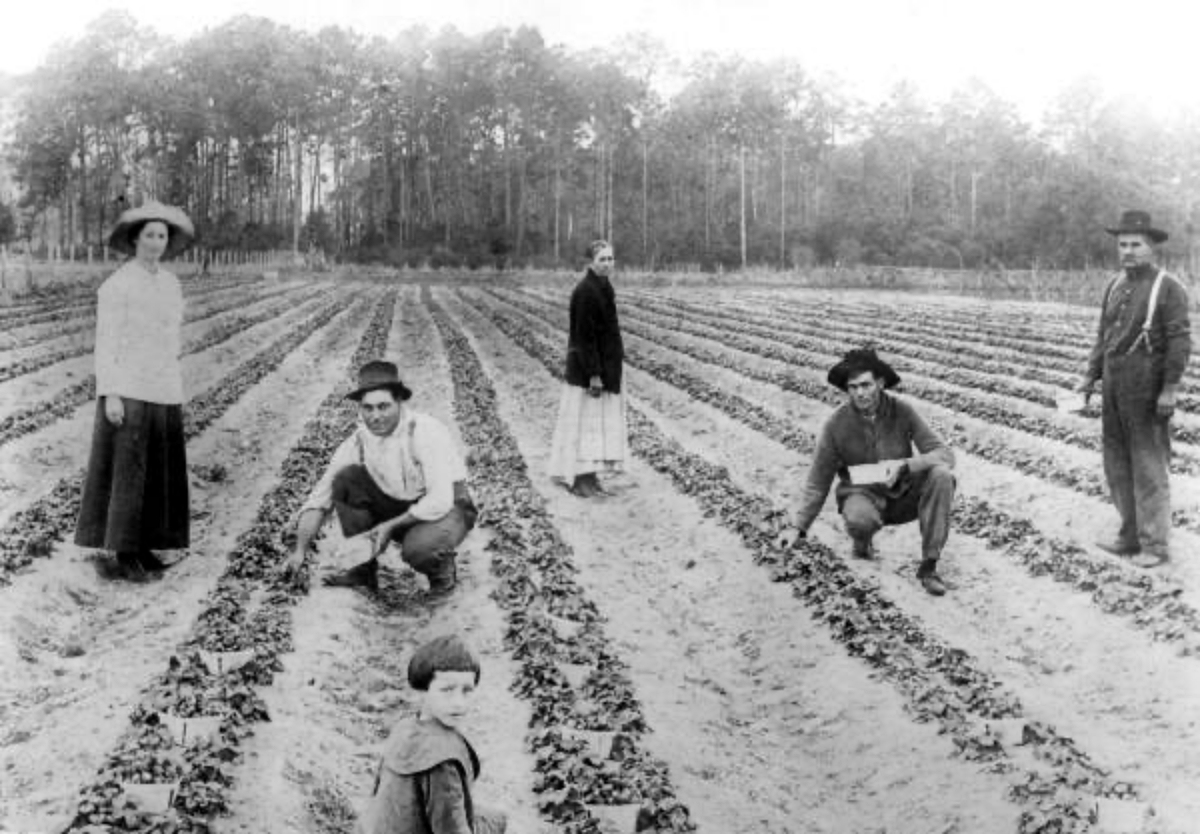There was a time when many families depended on their crops to survive. Not only did they use whatever they produced, but their excess crops were the only way they had to pay for the things they needed- from shoes to stoves to new farm equipment. A lot of farming families had a lot of children and they were each expected to help out around the house and on the farm. Older kids looked after the younger ones, young girls learned to cook for the family early, and many kids were expected to tend to the animals and even pick crops seasonally. Rather than have the children miss a lot of school, many communities adopted modified schedules to cater to the crops that were grown locally. In Florida at one time strawberries were one of the biggest crops and so these schools became known as strawberry schools.

City kids might be sent to their grandparents or another relatives house for the summer, but farm kids often had to work. Crops like berries, peas, beans, and tomatoes require hand-picking. That kind of labor is hard to accomplish with only 1 or 2 people and acres of crops to harvest. But, even before the harvest there was planting, watering, and tending to do.
Many of these farming schools were only changing up what had already been an altered school year with summer vacation. Summer break was originally intended to accomodate farming families by letting kids out of school during the most labor-intensive months. In Florida for the strawberry season some schools were in operation from spring until December, leaving the period around Christmas and New Year’s free for children to do a hefty amount of picking. In Connecticut there were potato schools, in New York State there were apple schools, and there were tomato schools in parts of Ohio.

By some accounts there were rural schools in the 1800s that were only open a few months out of the year in order to give farming families the most labor from their children.
School reform aimed at increasing skills and education for youngsters often had more support in urban areas, where commerce and white collar jobs were plentiful. However, in rural communities the labor that children provided was critical to making ends meet for agricultural families, and so they were less enthusiastic about their children spending most of the year in school.

By the 1930s many public programs, including nursery school and expanded public schools, meant that more families were getting used to their kids attending school on a more modern schedule. However, in some areas the altered school year remained until the 1940s or later to maximize crop yields. And, our summer breaks today reflect this.
SKM: below-content placeholderWhizzco for DOT

